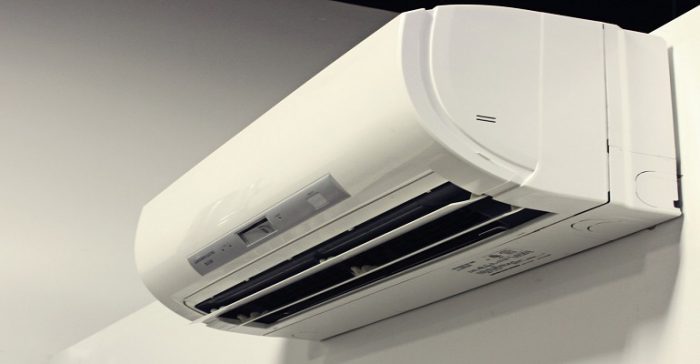The Top 10 Myths of Ductless Technology
And the Top Mini-Split Myths Are …
Written by Robert Beverly, achrnews.com, November 14, 2018
Some beliefs, like Greek mythology, last for generations because they contain a valuable lesson. Others, like these, are just ready to become ancient history. Here are 10 myths about VRF, mini split, and ductless technologies.
MYTH NO. 1
Since there is no ductwork design involved, ductless indoor units can be installed anywhere.
Even without having to worry about ductwork, selecting the right placement and size for ductless indoor units is very important for efficiency and performance. Undersized systems will not adequately or evenly cool or heat a home, while oversized systems needlessly increase costs and don’t perform properly due to short cycling. An HVAC contractor is able to select the appropriate size unit for each zone and will strategically place indoor units to ensure the home is cooled or heated evenly and efficiently.
MYTH NO. 2
Mini-split systems can only be duct-free.
A common misconception is that mini splits are exclusively duct-free systems, and for a long time, mini splits were marketed as duct-free. In recent years, there has been a growing trend of ducted mini-split systems. These designs allow customers to take advantage of their existing infrastructure and ductwork while still reaping the benefits of zoned control and comfort as well as the improved efficiency of inverter technology. This approach, while mirroring a conventional setup in some ways, does contain at least one difference. While a ducted mini-split system is laid out very similarly to a unitary system, complete with an air handler, it does differ because the indoor air handler does not require its own power source, as it draws power from the outdoor unit.
MYTH NO. 3
Ducted indoor units in this category have low external static pressure capabilities.
This one was addressed succinctly by one manufacturer that said, “[Our company] has ducted units that have up to .8 inches external static pressure.”
MYTH NO. 4
Mini splits are just for spot cooling, like in a warm room or an addition.
You might consider this the Schrodinger’s Myth of the list. It is certainly not true according to manufacturers and the capability of the technology. And yet, as illustrated elsewhere in this week’s mini-split articles, it’s true or not true depending on which contractor email you open and which locality you’re talking about. This perception seems likely to continue to decrease over time. Let’s call it a myth in motion.
MYTH NO. 5
Duct-free systems require more maintenance.
With the presence of more advanced technology, the perception is that mini splits require more work to service. The truth is many mini splits make it easier for the homeowner to stay on top of regular maintenance, streamlining the maintenance a contractor needs to perform. One manufacturer pointed out that in its units, the filter is easily removable for quick cleaning, and the company’s software makes it simple for contractors to troubleshoot issues.
“Additionally, unlike many conventional systems, where the indoor units might be in a crawlspace or the attic, with a duct-free system, both the indoor units and outdoor unit are easily accessible to the contractor for servicing,” said the manufacturer.
MYTH NO. 6
Mini splits are only good for new construction.
(See Myth No. 7).
MYTH NO. 7
Mini splits are only for a retrofit market.
The fact that we received these two comments verbatim from different sources tells you the range of inconsistent knowledge and perception that persists among the customer base (and perhaps some in the field) when it comes to these systems.
The manufacturer reply below about the retrofit-only impression also hints at the learning curve and the benefits of effective design/construction coordination.
“These systems are being used in new construction all the time due to their flexibility of installation and incredible efficiencies. There are many construction and space-saving advantages when an architect is educated about this technology.”
MYTH NO. 8
Mini- and multi-split ductless products will only be a small part of a contractor’s business.
There are more and more contractors who are proficient in installing these types of systems. In fact, for some contractors, it makes up the largest part of their product mix. Another key contributing factor is that contractors are finding that they are able to complete more installations in a week, and they’re doing it with a smaller crew.
MYTH NO. 9
All of the products in this ductless category use the same inverter technology.
Without getting into a company-by-company comparison in this limited space, it’s been pointed out that contractors may find differences in products offered in the inverter technology category. Number of stages of operation, proprietary algorithms/designs, etc., may affect the overall performance, so explore what’s under the hood of the various systems available.
MYTH NO. 10
Mini splits are easy to install.
While in some ways, yes, they are easy to deal with, they are by no means easy. It takes a highly trained and skilled professional technician to properly install, startup, and commission the system.
“We pressure test our systems to around 400 psi with nitrogen to ensure that there are no leaks — not something for a novice to be attempting,” one manufacturer said.
[mks_button size=”medium” title=”This article was written by Robert Beverly and was originally posted on achrnews.com ” style=”squared” url=”https://www.achrnews.com/articles/139500-debunking-the-top-myths-about-vrf-mini-split-and-ductless-technologies?ajs_uid=9897H8458278B0S&oly_enc_id=9897H8458278B0S&ajs_trait_oebid=3782E0258467B1M” target=”_blank” bg_color=”#dd9933″ txt_color=”#FFFFFF” icon=”” icon_type=”” nofollow=”0″]
